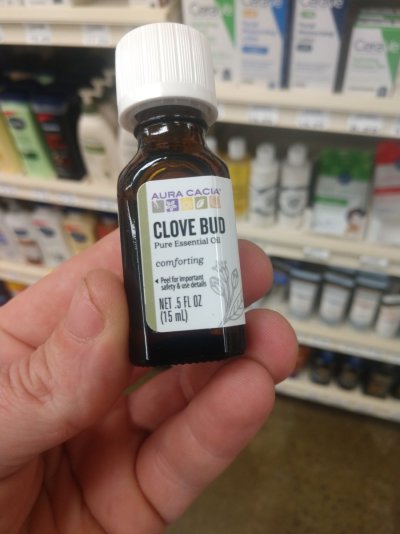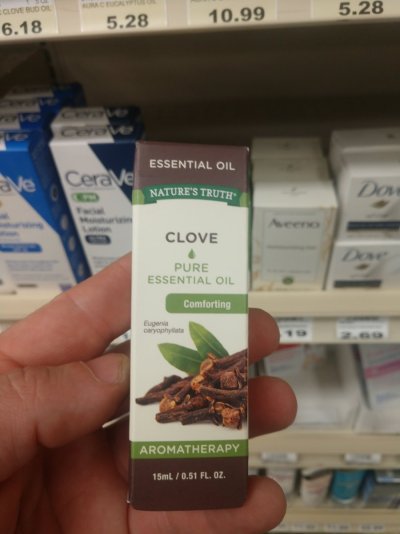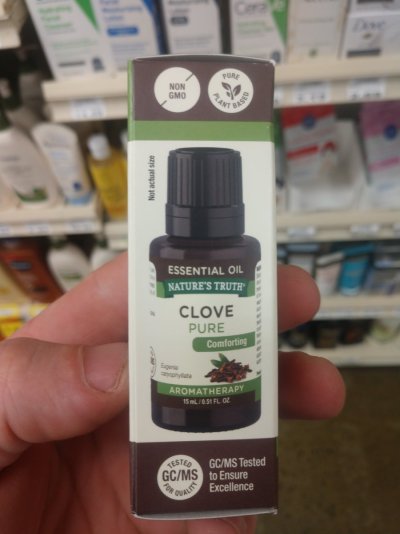Oh wow, that is bad. His stomach also looks swollen like he's no longer able to digest food (but maybe that's the angle of the pic).@ReefSquad goby is getting worse. His body is progressively missing more, his tailbone is now exposed. What is the best way to euthanize him? A poster above said clove oil, how do I do that.
@Jay Hemdal will this spread to my clowns? Goby is in hospital with kanaplex as I'm still waiting for neoplex
The below methods came from Jay in another post. Clove oil is there. I keep this handy. I am so sorry this happened to your sweet goby but he needs to be out out of his pain. :-( Gobies are my favourite.
MS-222
Every aquarist should have a plan for specimen euthanasia before they need to employ it. An overdose of buffered Tricaine methane sulfonate (MS-222) is the preferred method for euthanizing fish. Dosing at a rate of greater than 300 mg/l MS-222 along with 300 mg/l sodium bicarbonate is effective for euthanizing fish within 30 minutes. However, MS-222 is expensive, and not readily available in smaller quantities to home aquarists. Removing the fish too soon from the solution may allow it to recover. It is therefore suggested to leave the fish in a small amount of the euthanizing solution, and freeze it for later disposal.
Clove oil (eugenol)
One product that aquarists can buy that is approved by at least some veterinarians and research biologists is clove oil, also called eugenol. A dose of 50 mg/l is usually sufficient in euthanizing fish. This equates to about 0.20 ml of eugenol in one gallon of aquarium water.
Because eugenol does not mix well with water, and because larger volumes are easier for hobbyists to measure out, it can be dosed using the following method:
1) Add 2 ml of eugenol to 100 ml of tank water in a sealed container and shake it vigorously.
2) Add 10 ml of this suspended solution to each gallon of water needed to euthanize the fish.
3) Place the fish in this solution and keep it covered to prevent it from jumping out and to help keep it calm.
4) Wait at least twenty minutes after it stops breathing, and then remove the fish from the solution and freeze it for later disposal.
Other methods
A variety of other methods have been proposed for the euthanasia of fishes, but none are fully accepted by veterinary experts. Still, home aquarists need more common tools to use, so those methods are listed here in roughly descending order of suitability:
Ethanol
Regular alcohol at a dose of 25 ml per liter will cause respiratory collapse and death in fishes within 30 minutes. The trouble is that alcohol is not available in pure form unless it has been “denatured” by the addition of distasteful chemicals such as turpentine. Vodka is about 40% alcohol by volume, so using it 62 ml per liter will give an effective dose.
Decapitation/pithing
Cutting a fish’s spinal cord, right behind the head, is a quick method of euthanasia that is approved for use in food fishes (where the use of chemicals would otherwise make the flesh unfit to eat). The issue is really that the method is distasteful for most people to do, so it is rarely used by aquarists. However, it is quick and effective.
Freezing
Placing the affected fish in a small amount of aquarium water in a sealed container and then placing the container in a freezer is a euthanasia technique used by some people. However, it is slow to work, so it is not considered humane. Its appeal as a method is that the fish is “out of sight” so people feel more detached from the process.





















